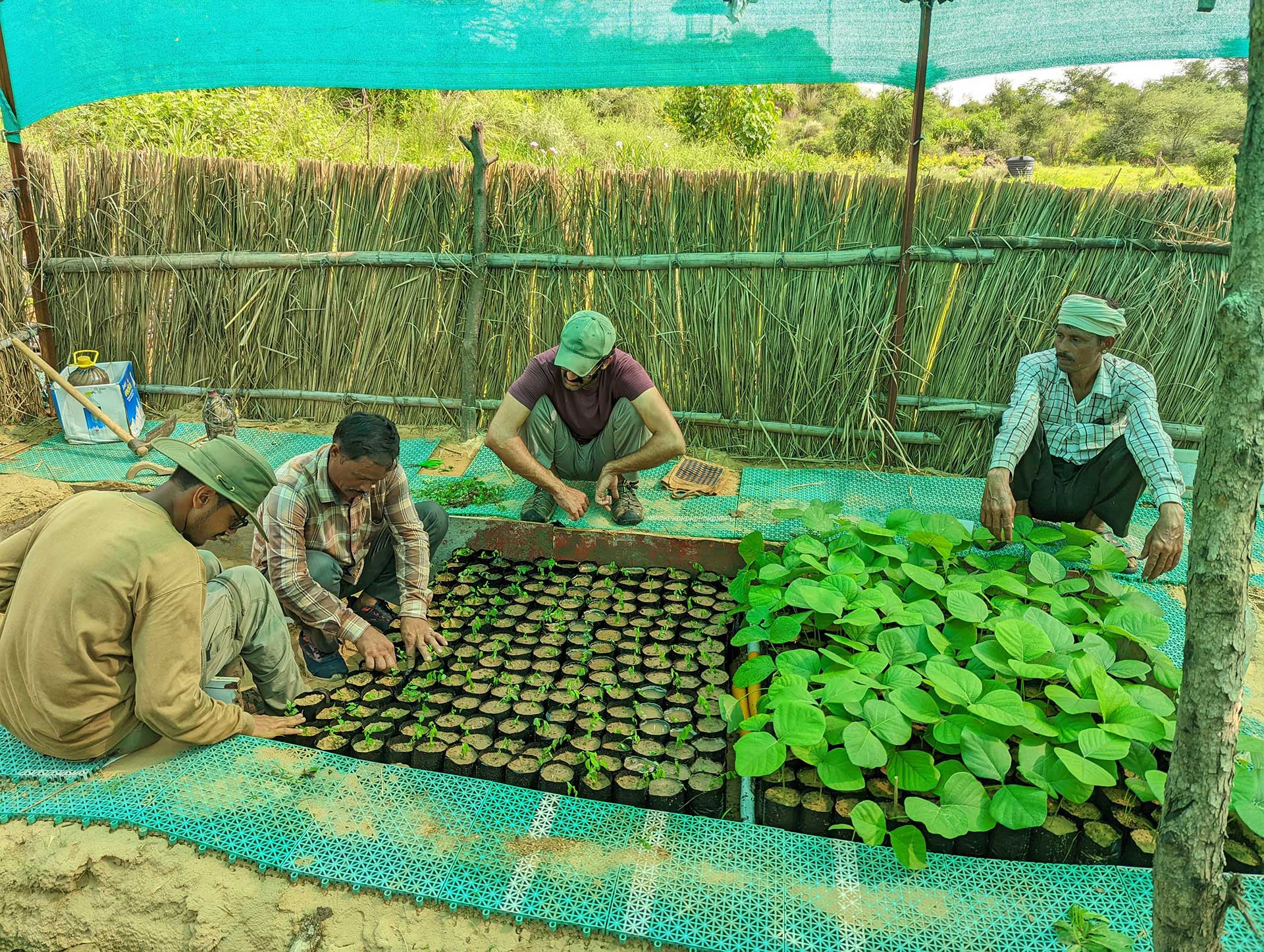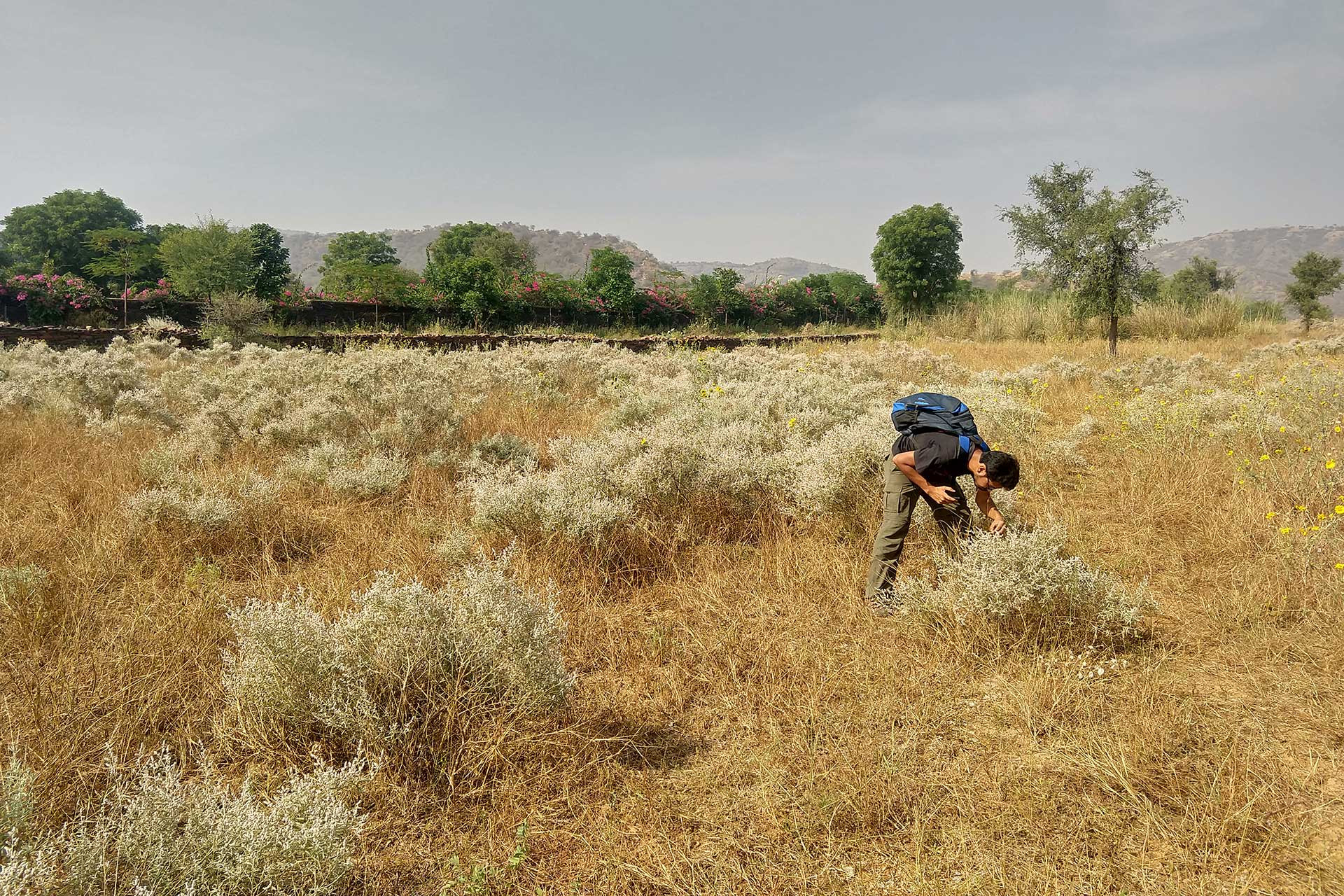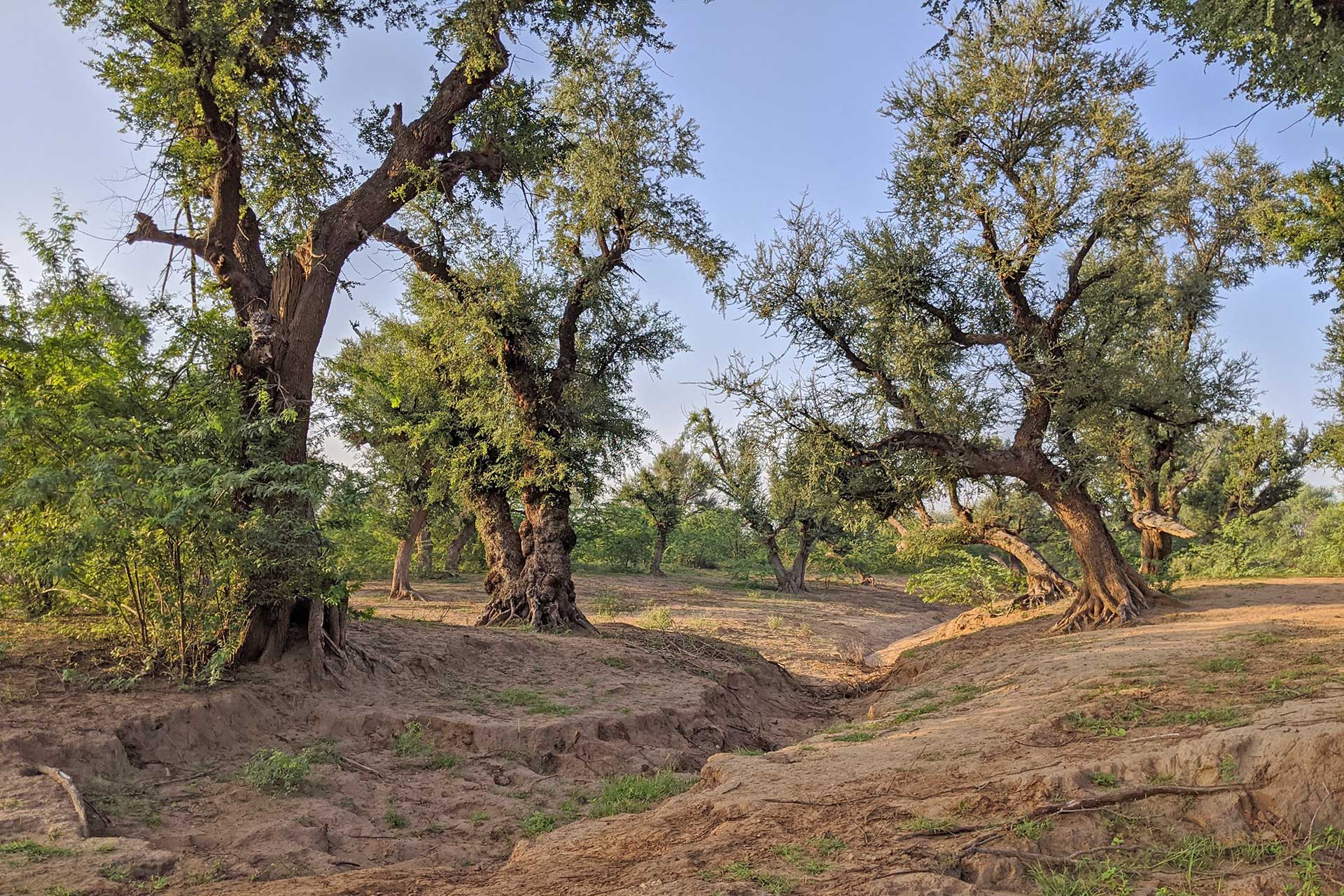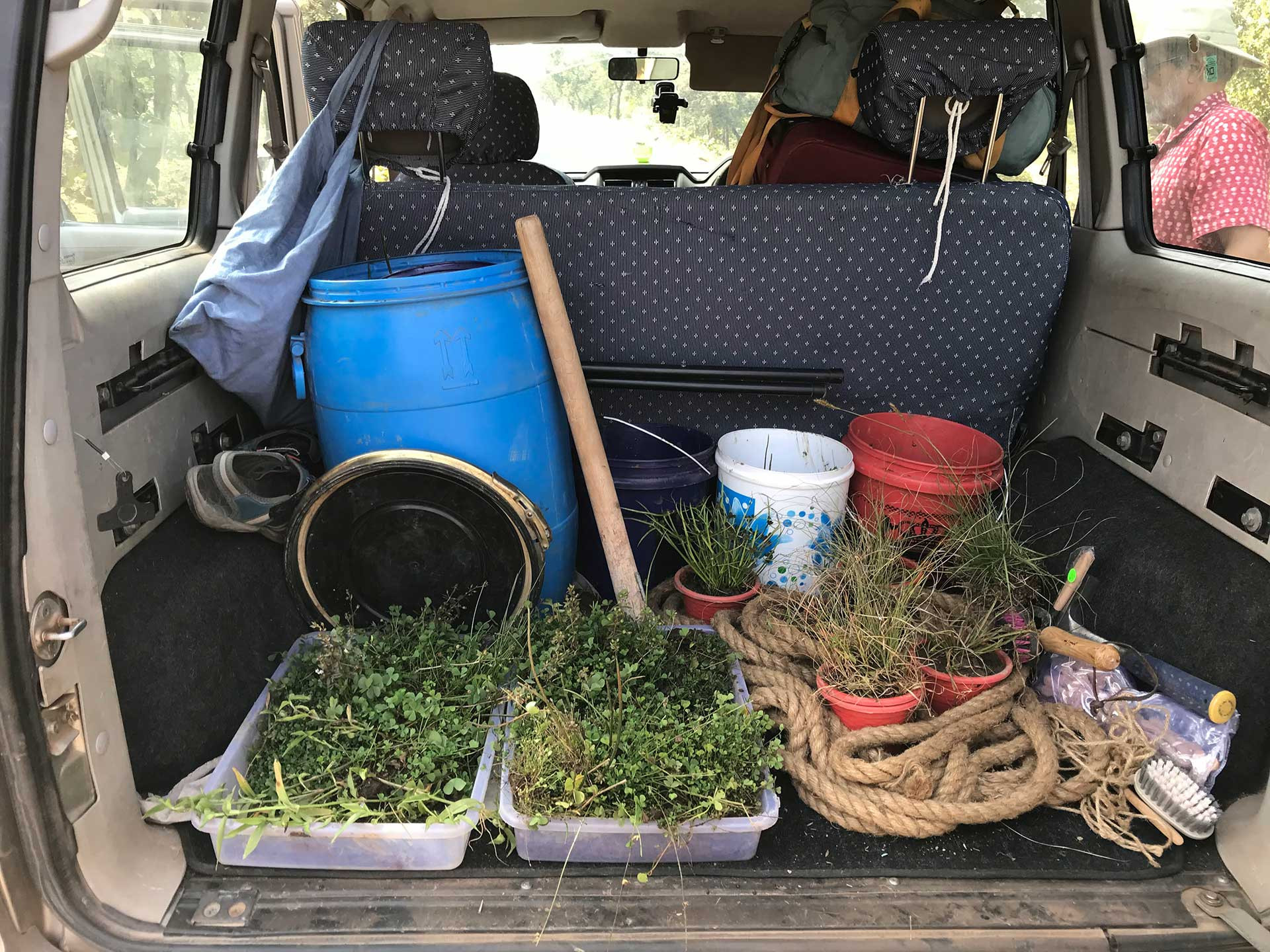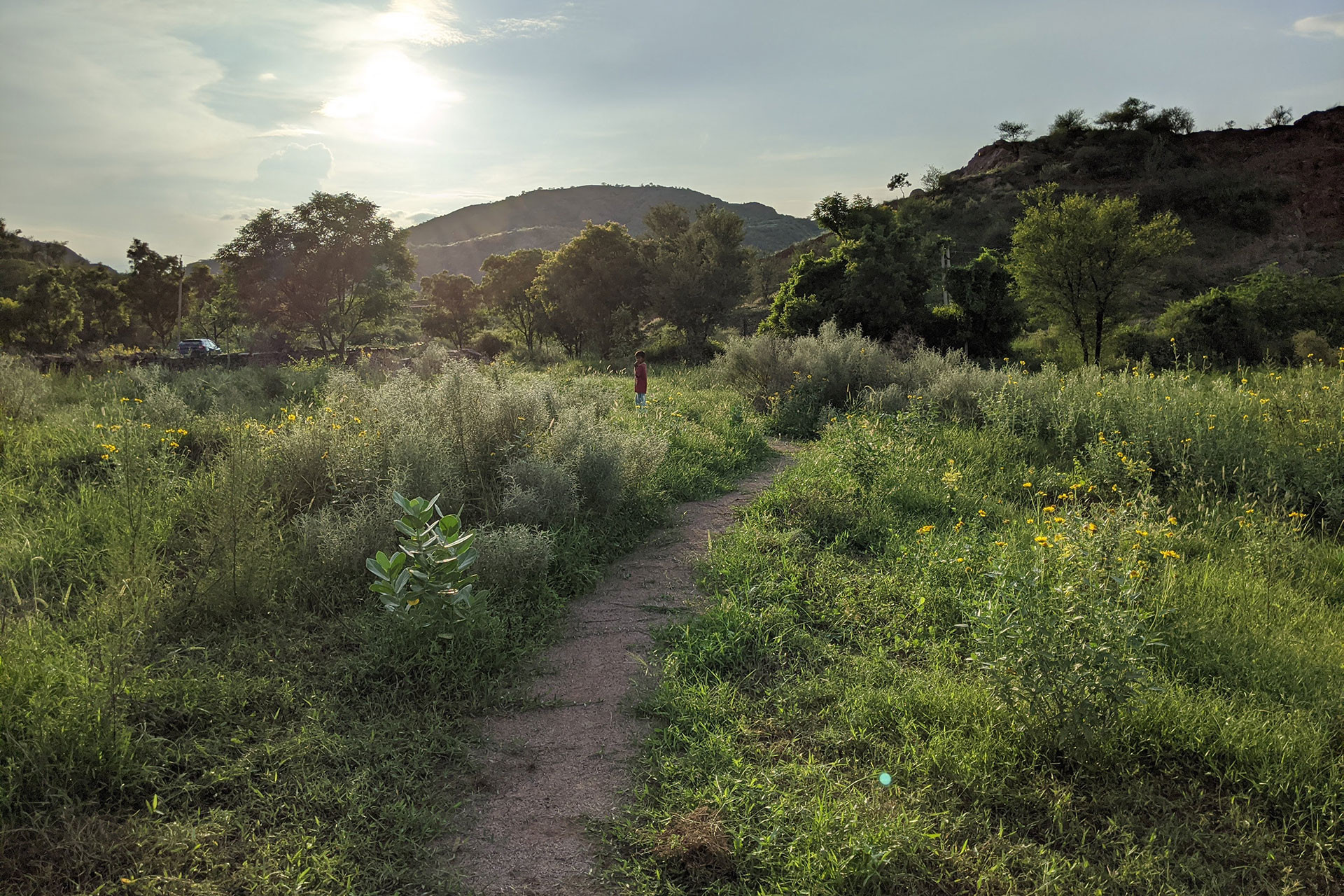Featuring Native Plant Garden at Dhodhakari in the Aravalli West Thorn Scrub Forests ecoregion.
We often get asked what the design process is when ecologically restoring or rewilding a piece of land with native species of plants. Conventionally, ecological restoration has demanded a landscape scale—land parcels large enough to include entire watersheds, public lands, the involvement of government institutions, local communities and extensive funding. We’ve worked at a much smaller scale, usually for private landowners. So we write this article primarily for people working at this site design scale—landscape architects, landowners interested in creating ecologically-sound gardens, and ecosystem gardeners. Perhaps these smaller rewilded sites can provide islands of refuge or be the ‘stepping stone ecosystems’ in a countryside rapidly losing its native flora. Or at the very least, these small spaces give us test sites where we are able to try things out and learn from mistakes and miscalculations.
When we started our rewilding work in Pali, Rajasthan, we began by trying to understand the proverbial design process we would need to create a jungle. Initially, we toyed with the easiest available option, the Miyawaki system, which prescribes extremely intensive soil work and densely planting solely woody species in mounds—100sq.m. geometric plots carved out of the larger area to be revegetated. We quickly discarded this method because, firstly, the planting scheme—in terms of spacing and species combinations—did not resemble any current or historical natural ecosystem in the region. Further, its high-input soil work seemed wasteful for hardy native species, which are, by definition, adapted to the minerals and moisture regime of the soil.
So we started applying a standard architect’s landscape design process—preliminary site analysis, assessing the land custodian’s needs, creating a base map on which to develop a landscape master plan, carefully detailing and placing plants like features on the map, and so on. But we felt, intuitively, that one big piece of the puzzle was missing. How would we know what were the appropriate species for the site? And even if we did our research and managed to draw up a list, where would we source the plants from? We were surely not going to choose from plants available in local nurseries, for we knew that none of them stocked native species. Finally, how would we decide where to plant what, and at what spacing? No amount of secondary research was giving us these answers. We were beginning to run out of ideas, and needed to seek advice.
We’d heard about Pradip Krishen and his work in rewilding a rocky tract of desert near Jodhpur. We approached him to provide us with the silver bullet that would turn our barren, degraded site into a lush forest or grassland. He was forthcoming, but instead of spoon-feeding us a fully formed design process, Mr Krishen gave us a loose set of pointers:
- Know your site: Get to know your plants, their ecological niches, and plant communities. Get to know your soil and understand what plants like to grow in them.
- Find a reference site: Look out for areas with undisturbed vegetation in your site's vicinity which have the same soil and moisture regime as your site. These will give you clues and provide direction about what appropriate planting might look like on your site.
- Track your site’s history: Scour through old gazettes, soil and hydrogeology reports, speak to old timers about their memories of the area, and try to reconstruct the wilderness that would have existed on your land—this will serve as one of your main sources of inspiration.
- Start an in situ nursery: Conventional nurseries do not stock native plants, which makes it essential to build your own nursery of native plants.
- Planting out: Instead of thinking like landscape designers, try to mimic natural habitats in your planting. Ultimately, this is an intuitive process that develops as you learn more about your ecosystem. Further, planting needs to be rigorously monitored. By tracking your planting year on year, you’ll be able to understand exactly which species thrive in what micro site. This process is inherently iterative and demands at least a few years of planting, feedback and replanting.
- Custodian involvement: A crucial part of the design process is to involve your land custodians and caretakers in the process itself, and enable their discovery of the landscape and its inhabitants.
Armed with this new knowledge, we dove headfirst into the project. The first step was identifying plants. We had no formal training in Botany, so identifying plants merely by sifting through floras was nigh impossible, at least in the beginning. So we used field guides (not always good ones) and sought the help of online forums like eFlora of India. The process was untidy and demanded utilising multiple sources like the internet, books and locals who were familiar with the local names. We began collecting seeds and dedicated a lot of our time and effort in building our native species nursery in Delhi, an activity that, in hindsight, paid huge dividends.
In fact, anybody interested in working with native plants should start a nursery. Seed collection trips provide some of the best opportunities to come into intimate contact with plants and their ecological niches, and learning their germination techniques builds on this relationship. We came to see that designing with native plants really meant learning to garden with them. It wasn’t just about placing them on a drawing on a piece of paper—we first needed to understand how and where they live, propagate themselves, and occupy space with associate species.
This is when our nursery work started garnering attention and led us to a project in NE Rajasthan. This was a piece of sandy agricultural land abutting a quartzitic hill in the northern Aravallis. Using the Central Groundwater Board’s generalised soil maps (available online for all districts), we figured out that these were sands of Aeolian origin, as in, sands blown in by the hot loo winds from the west. We were quite familiar with the local woody species by then, but we still needed to find reference sites to understand how plants were growing in relation to each other.
Ecological restoration best practices prescribe finding a reference site with an intact ecosystem, untouched by man’s expertise in destruction. In our case, this ideal reference site didn’t exist in close proximity. All around, similar dunes had either been flattened by JCBs, chewed thin by goats, or densely invaded by a suite of invasives including Acacia tortilis and Verbesina encelioides. We had to make do with piecing together clues from degraded common lands, abandoned crop fields, empty housing plots, roadside verges, and spent quarries. Dry-land farms that didn’t manage to grow a winter crop provided us hints about what pioneer species begin to emerge once the land is left fallow for a season. We also came across huge old trees every now and then. These provided doorways into imagining the potential forests that would have existed on these degraded lands. We also found ourselves in a unique situation—we heard about Kishanbagh, a restoration site nearby on a similar sand dune with many more years of exploration and plant collection behind them. We visited and used Kishanbagh as a textbook, making detailed notes about their planting and design strategies.
With all the new information that we absorbed from our field excursions, we felt a lot more confident going into that first year of planting. We had taken detailed notes of plant communities and spacing, and decided our planting scheme accordingly. For our first year, we managed to source some plants from specialised nurseries like Rao Jodha Desert Rock Park, AFRI Jodhpur, and our own nursery in Delhi. Now with the hard bits behind us, we completed that first year of planting quite seamlessly, and felt a sense of accomplishment.
But during a site visit in the winter after the first round of planting, we realised we had not paid heed to one crucial piece of advice: the importance of grasses and herbs. Even though we’d started observing and documenting both, we had pushed back, adding them to the planting scheme in subsequent years. This, in hindsight, turned out to be a huge mistake! We learned that any transformation of land in a dry, arid environment is driven by annuals and grasses. They clothe the ground and form the backdrop for trees and shrubs. Without them, the landscape looks bare and patchy, like it did that winter morning! We realised we had to start all over again—teach ourselves about identifying grasses, collecting grass seeds and slips, and how to propagate them.
For all our grasses and herbaceous annual wildflowers, we had to start a small in situ seed bank and nursery. Small, site-specific nurseries like these act as a staging ground from whence further exploratory trips can be planned for new accessions. Collected seeds are brought back to the site and their germination techniques are figured out through trial and error. Plus, grass and forb (wildflower) propagation is learnt by broadcasting each monsoon and observing results carefully. In this way, even site-scale restoration demands a multi-year engagement and learning through iteration. Making a detailed master plan from the first year makes no sense in this context. We need to have the time to get to know a site to plant it up properly.
This is basically the process—get to know your plants and soils, collect seeds and raise a nursery, plant them out based on what you’ve learnt from your reference site visits. It sounds simple enough but what takes time is the process of understanding the landscape well enough to be able to see the patterns. To be able to sense subtle changes in soil type and vegetation from a moving car. To be able to see relationships between what’s above and below the ground—to be able to read landscapes like a book. The rewilding process is less about linear steps in a fixed design process and more about really getting embedded in a landscape, its rocks, soils, flora and fauna (including humans). It demands feet on the ground and long hours of walking. The process is not so much about designing and creating something new but carefully re-pairing plants with a landscape based on direct observations from the field.




